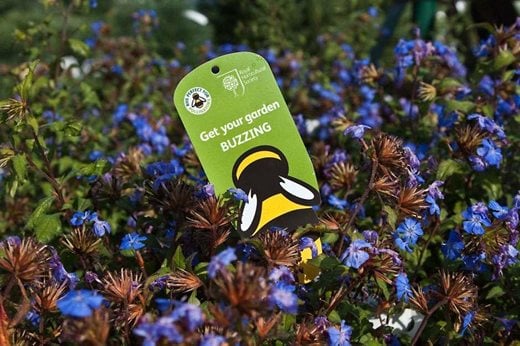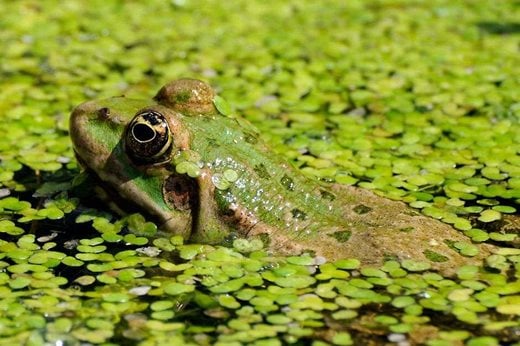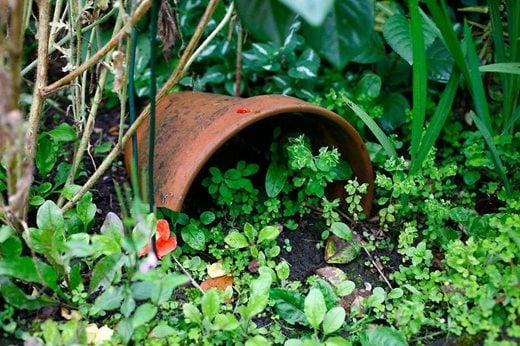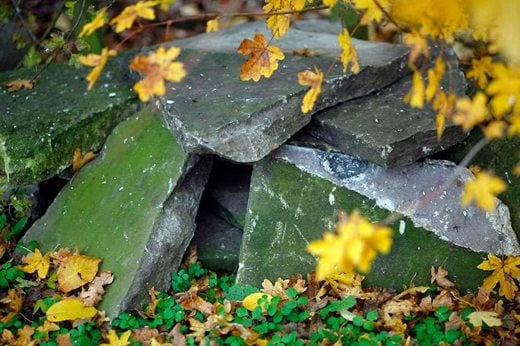Increasing the biodiversity of your plot doesn't have to be hard, or compromise the way your garden looks
 Here are a few small changes you could make to the way you manage your garden that can bring major benefits for the creatures that call it home.
Here are a few small changes you could make to the way you manage your garden that can bring major benefits for the creatures that call it home.
Choosing the right flowers
Flowers provide pollen and nectar for bees, butterflies and other insects that perform the vital task of fertilisation – seed and fruit production would drop dramatically without them. Avoid too many highly-bred cultivars with big and blowsy or double flowers, most of which contain little or no pollen or nectar.
Choose plants that provide pollen and nectar for as long a season as possible, from spring (Crocus and Mahonia for example) through to autumn (Michaelmas daisy, Sedum spectabile and ivy, which is particularly late to bloom and may provide food into early winter). Studies such as the RHS Plants for Bugs project are helping us understand how both native and non-native plants support garden wildlife.
See a list of suitable plants for wildlife gardens (1MB pdf)
Grow a mix of trees and shrubs
Grow a range of trees, shrubs and climbers, or a mixed hedge to provide food and shelter. The biodiversity found in our Urban Gardens project showed, perhaps unsurprisingly, that larger plants, particularly trees, support more wildlife. As well as providing food in the form of flowers, fruits and seeds, they provide cover and nesting sites for garden animals, from insects to larger species such as birds.
Small trees and shrubs that are good for blossom and berries include rowan, crab apple, elder, blackthorn and hawthorn – and not just our native species. Fruit trees support a range of specialist native wildlife and can provide for them while also supplying you with a useful crop.
Look after mature trees
If your garden is too small for big trees, get some planted in the neighbourhood, and protect those that are already there – large street trees provide a vital habitat for a range of wildlife that may visit nearby gardens while foraging. Wildlife rarely respects garden boundaries: try to see your own plot as part of a wider web of interlinked gardens and green space.
 Add water
Add water
Ideally dig a pond, but a container of water will suffice. The single easiest way to add wildlife value to a garden is to install a pond, however tiny - a large pot or even an inverted dustbin lid in an out-of-the-way spot will do.
Ideally, do not introduce fish to a pond primarily there for wildlife (they will eat anything that moves), and if you can resist temptation, allow water plants to colonise naturally. Make sure ponds have at least one sloping side to allow creatures an easy way out. Most wildlife, including amphibians such as newts and frogs, like shallower water than is generally thought.
Leave a pile of dead wood in a shady spot
Decaying wood provides an ever-rarer habitat to a range of specialist wildlife that is growing increasingly uncommon in the countryside, such as stag and bark beetles and their grubs, and many species of fungi. It also provides cover and hibernation sites. Any unstained or unpainted wood is suitable, although big, natural logs are best, ideally partly buried. Log piles can look quite architectural and rustic, though many people prefer to tuck them out of sight.
Compost, compost, compost
Composting your garden waste helps all your garden plants and wildlife, as it speeds up the natural recycling of nutrients by harnessing native decomposer organisms (saprophytes), especially fungi and soil bacteria.
Why compost?
- Compost makes for healthy soil, which is good for everything living in it and growing on it
- It is an excellent mulch
- It's free and easy to produce
- Unlike organic matter imported from elsewhere, it comes without packaging or 'fuel miles'
- Compost heaps also shelter many small creatures (and some larger ones, like slug-loving slowworms and grass snakes), which enjoy the heat released by decomposition.
Provide food and water for birds all year
Garden birds are some of the most conspicuous of garden wildlife, and easy to attract with supplemental feeding. Over the winter supplementary food can mean the difference between life and death for many, especially when winters are particularly cold.
Ideally, offer a mix of food including peanuts, sunflower hearts, seeds, kitchen scraps and fat balls, or proprietary seed mixtures, to supplement natural food such as berries and seedheads. Don't forgot that a supply of clean, unfrozen water is just as vital for feathered visitors – and ensure feeding tables are not accessible to cats.
Don’t b e too tidy
e too tidy
This doesn't mean your garden has to look a mess, but piles of leaves and twiggy debris provide both food and habitat for many species. If you leave perennials uncut over winter, their hollow stems can shelter hibernating insects. Piles of stones also make good habitat, particularly for hibernating reptiles and amphibians - tuck them away in hidden corners, at the back of borders or even behind the shed.
Allow a patch of grass to grow longer
If you don't have room for, or don't want, a full-scale wildflower meadow, simply allowing patches of lawn to grow longer will provide shelter for small mammals such as wood mice, voles and shrews, and food for some butterfly caterpillars – not all of these eat cabbages or nettles, contrary to popular belief.
Garden sustainably to help protect wildlife
Sustainability is an environmental buzzword that simply means minimising your use of finite resources (such as oil) in favour of those that are continuously produced by natural processes (power from wind turbines or bringing it right home, using your own compost).
Synthetic pesticides are not only toxic to more than the target organisms, they are extremely energy intensive to produce, so employ them as a last resort wherever possible. Avoid peat-based composts, choose sustainably-sourced wood for patio furniture, recycle all you can, and save water wherever possible – these are all more sustainable forms of gardening. It will help ensure that your garden treads lightly on the world.
Scatter wildflower seeds to create a meadowland
Meadows are simply mixtures of grasses and wildflowers. We have lost 96% of our diverse, species-rich meadows since the 1950s, so re-creating them in the garden can help redress the balance. They are great for insects, they are low maintenance, and they make a good, more natural alternative to a labour-intensive lawn. Annual meadows have a mix of annual wildflowers such as poppies, Nigella, corn marigolds and annual grasses; they will succeed on fairly rich soils, too, but a suitable seed mix usually needs to be re-sown each year.
Perennial meadows have more permanent plants such as buttercups, ragged robin and Leucanthemum. They need relatively poor soil as this allows the wildflowers to compete with the grasses including yellow rattle, a native annual that is a partial parasite on grasses also helps level the playing field. Mowing paths through meadows invites exploration.
 Make a rock garden
Make a rock garden
Steeply sloping ground, cliffs and rocky areas support their own specialised species of plants and animals adapted to surviving in areas with poor, thin soils. Their garden equivalents are rock gardens and gravel beds; planted well these are low maintenance, need little watering, and attract specialised wildlife such as mason bees, which are important pollinators.
Useful links
Find out more about the RHS Plants for Bugs research project
See our 'Plants for Pollinators' lists
Why do insects matter anyway?

